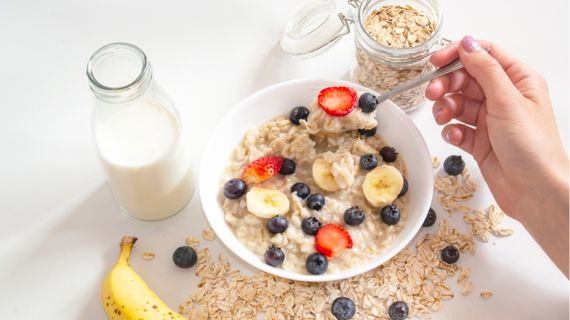Whey protein is the most widely used dietary supplement in the fitness world. Even though many of us have it at home, there are still a lot of unresolved questions surrounding it. One such question is how to prepare it - is it better to mix protein with water or milk?
How is whey protein made?
The basic raw material for whey protein is cow's milk, which contains about 80% casein and 20% whey protein. The precipitation of casein (e.g., in the production of cottage cheese and cheese) produces whey (also called milk serum), which contains whey protein. These proteins must then be carefully separated from the whey. This can be achieved in several ways, which determine the quality of the resulting protein:
- Membrane filtration. Membrane methods use a semi‑permeable membrane as a filter. The most commonly used methods are the so‑called cross‑flow micro or ultrafiltration, which do not damage the contained proteins and thus the resulting product is of high quality. This way, we can obtain both classic whey protein concentrate and isolate can be obtained (if filtration is carried out for a longer period of time).
- Ion‑exchange chromatography. This method, now considered inferior and somewhat obsolete, separates substances in solution based on their charge. In ion‑exchange chromatography, denaturation and degradation of some protein fractions occurs, thus reducing the quality of the resulting product.
- Hydrolysis. The whey concentrate already formed can be further processed by hydrolysis, a process in which proteins are broken down into shorter peptides and individual amino acids. The advantage of this processing is that the resulting product is digested more quickly.
What is the protein content of whey protein or whey powder?
Dried whey is often incorrectly confused with whey protein. In whey powder, carbohydrates are the most abundant nutrient, comprising almost 80% of its composition, whereas whey protein is predominantly protein. The following table provides a comparison of the energy and macronutrient content of cow's milk, whey powder and whey protein (concentrate).
| Semi‑skimmed milk | Whey powder | Whey protein | |
| Energy | 198kJ/47kcal | 1532kJ/361kcal | 1683kJ/398kcal |
| Carbohydrates | 5g | 76g | 6g |
| Protein | 3g | 13g | 78g |
| Fats | 2g | 0,5g | 7g |
Grass‑Fed Whey Protein Powder

What should you mix the protein with? After training, opt for water
1. When should you mix whey protein with milk?
It's true that milk often gives a better and fuller flavour to protein due to its fat and lactose (milk sugar) content. If you just want to have it "to taste" or as a substitute for a daily meal (such as a snack in the form of protein with a piece of fruit), combining it with milk is perfectly fine.
Similarly, adding protein to porridge, desserts or other foods with milk is not a bad idea.
2. When should you mix whey protein with water?
Immediately after exercise, however, the situation changes. Thanks to the above‑mentioned processes, during which the resulting product is deprived of most of the fat and lactose, whey protein boasts excellent availability and rapid absorption of the contained proteins. Especially after training, a rapid supply of amino acids to the muscles is highly desirable, as it temporarily increases the body's ability to synthesize (form) muscle proteins.
However, by mixing protein with milk, we reintroduce laboriously removed fat and lactose to our post‑workout drink, thus slowing its absorption. For this reason, it's much better to mix whey protein with plain water after a workout.
Bottom line
The production of whey protein from cow's milk primarily involves gentle filtration and the removal of other milk components such as casein proteins and, to some extent, fat and lactose. This is what makes whey protein highly usable and quickly absorbed, providing your muscles with a quick supply of amino acids necessary for building muscle mass.
The process of muscle protein formation is especially increased after training. Therefore, it is preferable to consume whey protein in combination with water post‑exercise to avoid slowing down the absorption of the contained proteins.
However, in no way does this mean that adding milk will devalue the whey protein. Because of the fat and lactose content, milk does slow down the absorption of the protein, but it often gives the protein a better and fuller flavor. If you drink protein as a replacement for a daily meal or just to "taste" it, combining it with milk is perfectly fine.

















